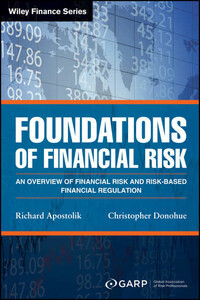Cover Design: Maryann Appel
Cover Image: ©iStock.com/Cobalt88
Copyright © 2015 by John Wiley & Sons, Inc. All rights reserved.
Published by John Wiley & Sons, Inc., Hoboken, New Jersey.
Published simultaneously in Canada.
No part of this publication may be reproduced, stored in a retrieval system, or transmitted in any form or by any means, electronic, mechanical, photocopying, recording, scanning, or otherwise, except as permitted under Section 107 or 108 of the 1976 United States Copyright Act, without either the prior written permission of the Publisher, or authorization through payment of the appropriate per-copy fee to the Copyright Clearance Center, Inc., 222 Rosewood Drive, Danvers, MA 01923, (978) 750-8400, fax (978) 750-4470, or on the web at www.copyright.com. Requests to the Publisher for permission should be addressed to the Permissions Department, John Wiley & Sons, Inc., 111 River Street, Hoboken, NJ 07030, (201) 748-6011, online at http://www.wiley.com/go/permissions, or fax (201) 748-6008.
Limit of Liability/Disclaimer of Warranty: While the publisher and author have used their best efforts in preparing this book, they make no representations or warranties with respect to the accuracy or completeness of the contents of this book and specifically disclaim any implied warranties of merchantability or fitness for a particular purpose. No warranty may be created or extended by sales representatives or written sales materials. The advice and strategies contained herein may not be suitable for your situation. You should consult with a professional where appropriate. Neither the publisher nor author shall be liable for any loss of profit or any other commercial damages, including but not limited to special, incidental, consequential, or other damages.
For general information on our other products and services or for technical support, please contact our Customer Care Department within the United States at (800) 762-2974, outside the United States at (317) 572-3993 or fax (317) 572-4002.
Wiley publishes in a variety of print and electronic formats and by print-on-demand. Some material included with standard print versions of this book may not be included in e-books or in print-on-demand. If this book refers to media such as a CD or DVD that is not included in the version you purchased, you may download this material at http://booksupport.wiley.com. For more information about Wiley products, visit www.wiley.com.
The Global Association of Risk Professionals has made every effort to ensure that at the time of writing the contents of this study text are accurate, but neither the Global Association of Risk Professionals nor its directors or employees shall be under any liability whatsoever for any inaccurate or misleading information this work could contain.
No employee of GARP is permitted to receive royalties on books or other writings he or she has authored or co-authored that are part of any program offered by GARP or which were authored as a part of their employment activities with GARP.
ISBN 978-1-119-09805-8 (Hardcover)
ISBN 978-1-119-10639-5 (ePDF)
ISBN 978-1-119-10640-1 (ePub)
PREFACE
The New World of Banking
Banking after the Global Financial Crisis
The global financial crisis of 2007-2009 will shape the ways banks are managed for many decades to come. It will also continue to affect the ways that politicians, regulators, analysts, and the general public think about banks and behave toward them.
Banking crises are not unusual. The Argentinian currency revaluation in 2001 led to a crisis for its banks, the Asian financial crisis of 1997 led to the insolvency of many of the region's banks, Sweden suffered a banking crisis in the early 1990s, and in the mid-1970s many second-tier British banks suffered huge losses as a result of a collapse in property prices.
Yet the 2007-2009 global financial crisis stands out from other banking crises due to its global extent, its impact on economic growth, and the far-reaching policy responses that have followed it. In all three respects, what happened in 2007-2009 resembles the financial crash and economic depression of the late 1920s and early 1930s more than it does any of the other banking system crises of more recent years.
The events of 2007-2009 challenged many of the widely held assumptions about how banks and banking systems worked. In simple terms, many things that would have been dismissed as unthinkable a few years before actually happened.








